ELC - Canoe Trip
Saturday, May 25, 2002A CANOE EXPEDITION THROUGH THE MANGROVES OF THE INDIAN RIVER LAGOON
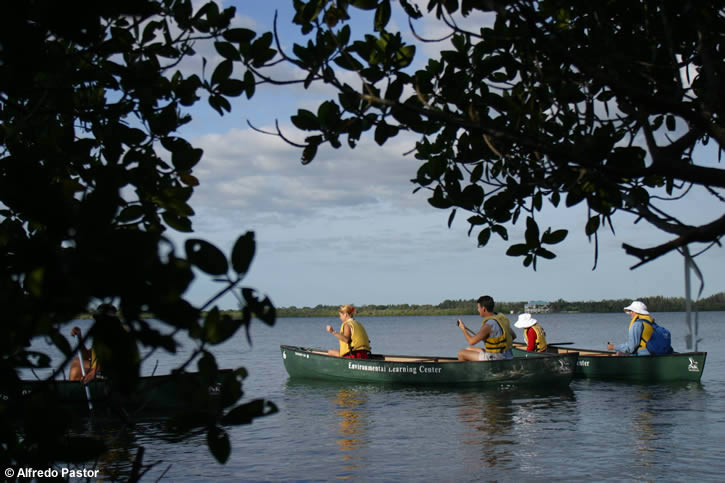
The Environmental Learning Center, Vero Beach, Florida
May 25, 2002
The canoe trip into the mangroves started at 7:00 a.m. with a lecture at the ELC. After the lecture we boarded canoes and went through the mangrove channels. The group heard a lecture about the wetlands environment and the importance of the mangroves, pointing out wildlife, fish, seagrasses, etc.
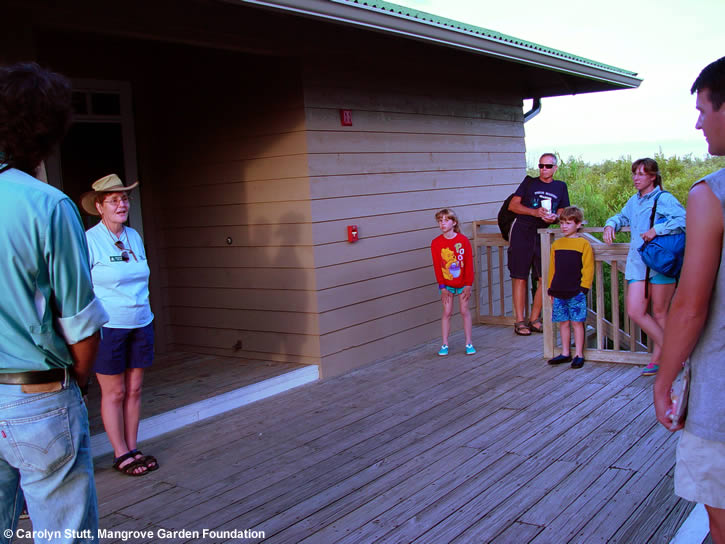
An intrepid group of adventurers from as far away as California and Ecuador, gathered at the Environmental Learning Center on May 25, 2002 at 7:00 a.m. After a brief, but warm welcome from the ELC guides (all volunteers), the group was escorted through the mangrove walkways of the ELC's facilities to their canoe dock, located on the fringe of the Indian River Lagoon (a.k.a. The Intracoastal Waterway (ICW) or Inland Waterway).
As the group progressed on the walkways, winding through the wetlands, the ELC guides pointed out the three species of mangroves, which make up the wetlands eco-system. These mangroves (Red, Black and White) are an integral part of the life cycle of the Indian River Lagoon, providing habitat for marine life and other indigenous wildlife. The group witnessed wading birds feeding in tidal waters, oysters clinging to the mangrove prop roots in clusters too numerous to count, crabs scurrying in their sideways fashion, to and fro on land, boardwalks and in the water, fish swimming in schools - sized from "fry" to adult - were prolific. The waters and mangrove forests of the wetlands were teeming with life - demonstrating that the mangrove eco-system is not only a refuge to wildlife; it is the nursery of the sea.
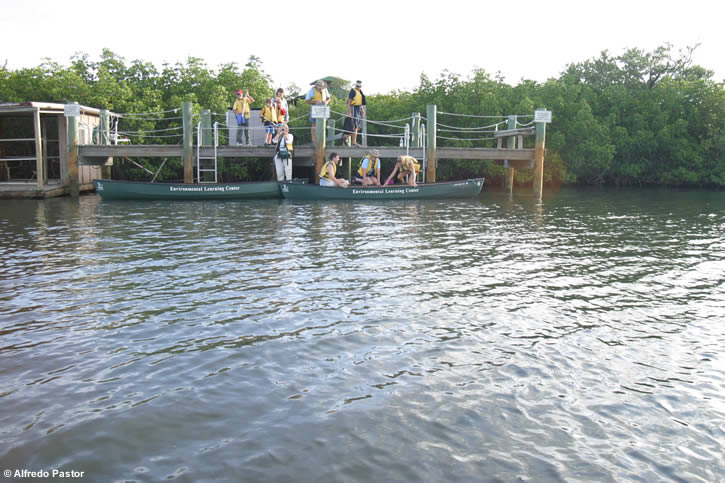
Embarking on an unforgettable journey, participants and guides board canoes.
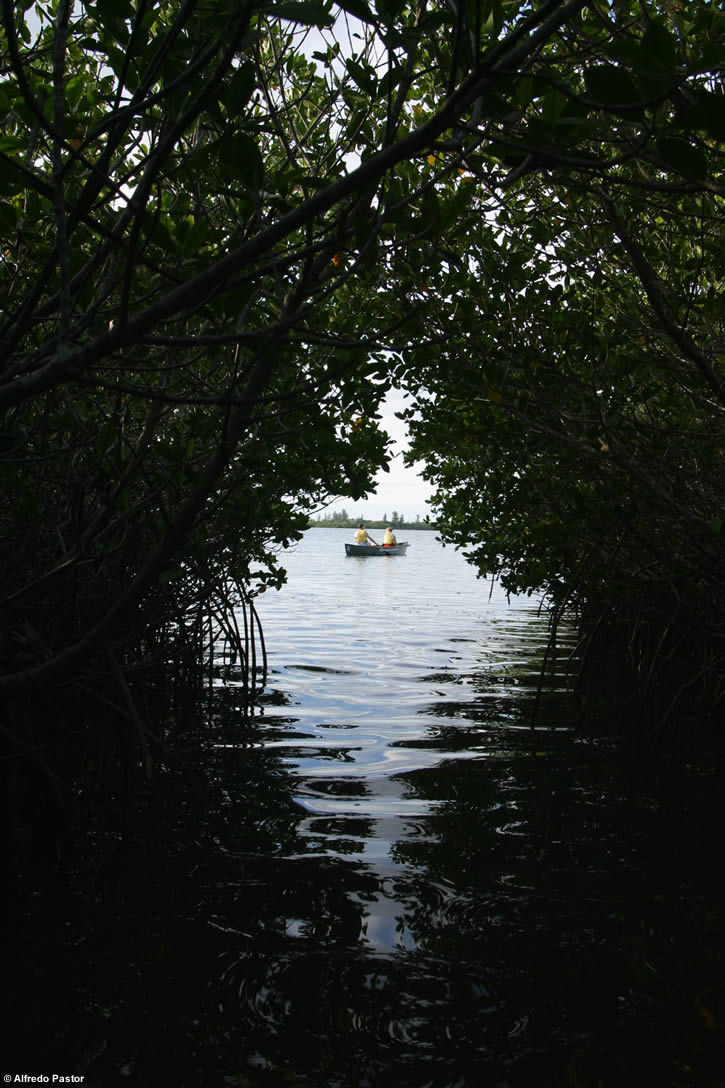
Entry into the cool canopy of the Red mangrove forest is like entering another world - a world in which one can explore and learn about a little known but precious and critically endangered environmental resource. The canoe journey through these pristine, narrow and twisting wetland waterways, is awe-inspiring. Led by the guides from the ELC you are a participant in an unforgettable experience - you are seeing and learning, first-hand, why mangrove fringes/forests and their eco-systems are essential to the health of marine life in the Indian River Lagoon and the ocean beyond.
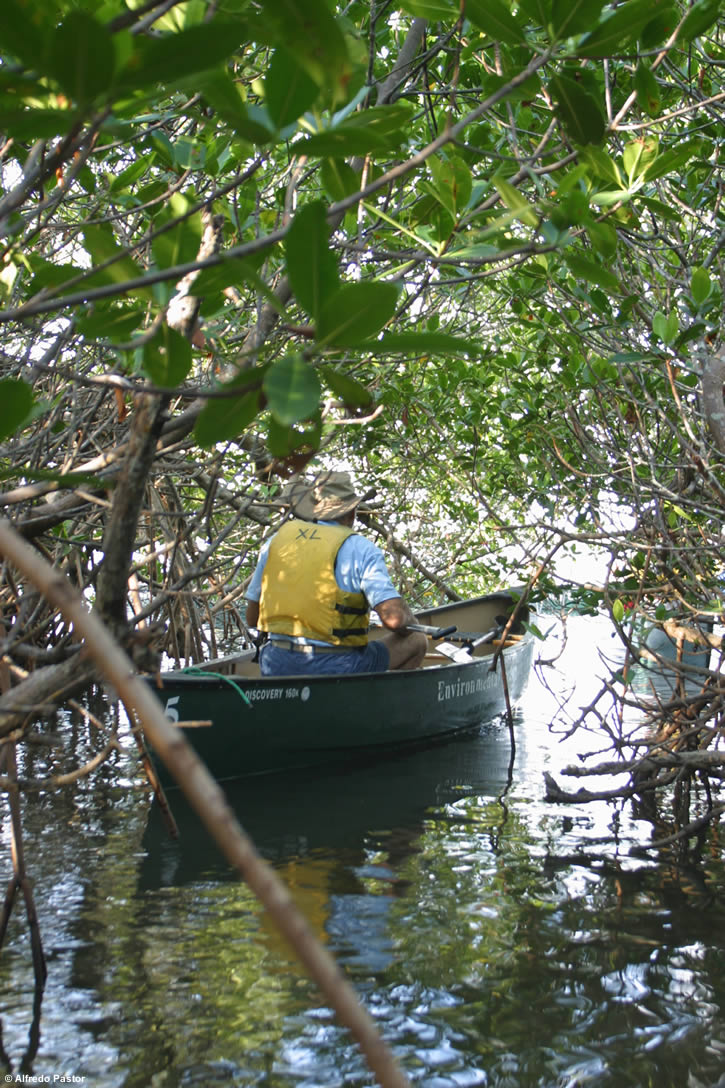
The narrow canals allow for up close contact and examination of the mangroves and the habitat their roots provide for crustaceans, fish and other indigenous wildlife. Water in these wetlands is brackish, i.e. a mixture of salt water and fresh water, and is supplied by tidal flow from the Indian River Lagoon. Tidal flow from the Atlantic Ocean provides salt water to the lagoon which mixes with the freshwater run off from the land along its shoreline and from man-made canals. The Indian River Lagoon, the largest estuary in the North America, is 156 miles in length and supports over 4,000 different species of fauna and marine life.
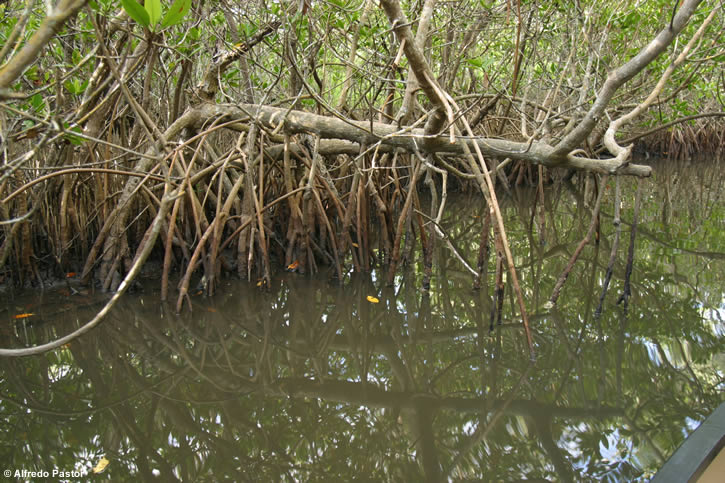
Note in this photo to the right, the ability of the Red Mangrove to drop roots from branches into the brackish water below, making them appear as though they are truly "walking" across the water, hence their nickname as Walking Mangroves.
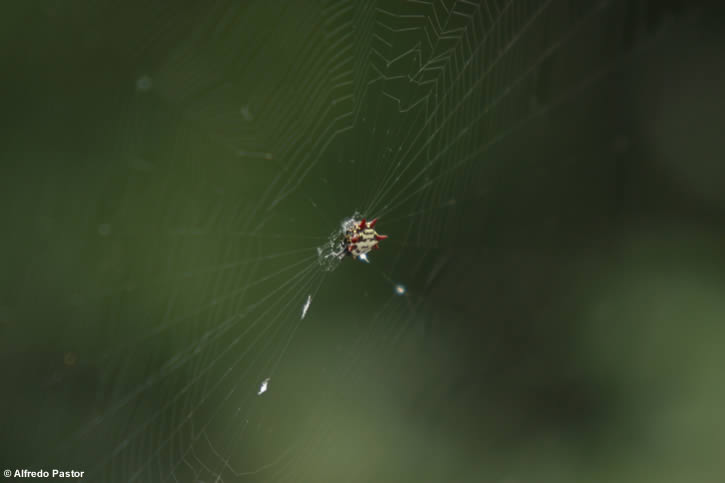
Wildlife abounds in the mangrove forests, and comes in many forms - note the horned spider in its intricate web, strung between branches that edged the waterways.
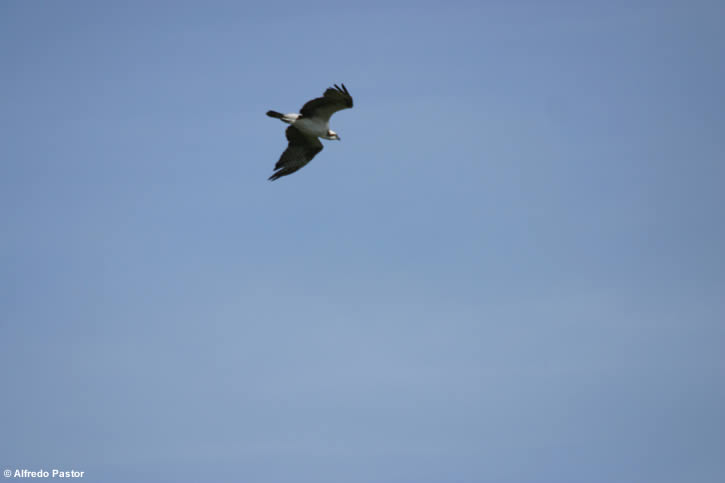
An osprey flies overhead in search of its morning meal - a fish from the Indian River Lagoon.
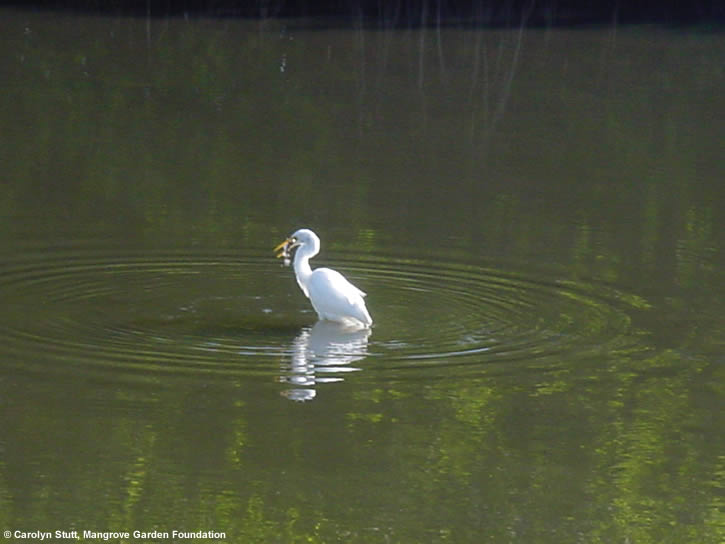
SUCCESS! This Great White Heron enjoys his catch of the day.
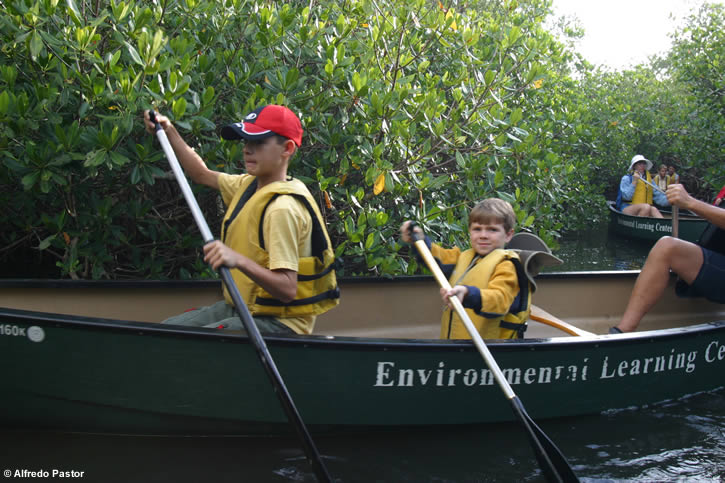
Children and adults, exploring together create lasting memories - but even more important than memories, they are learning about the importance of protecting a precious part of the world's environment thanks to the efforts of The Environmental Learning Center, its staff and volunteers.
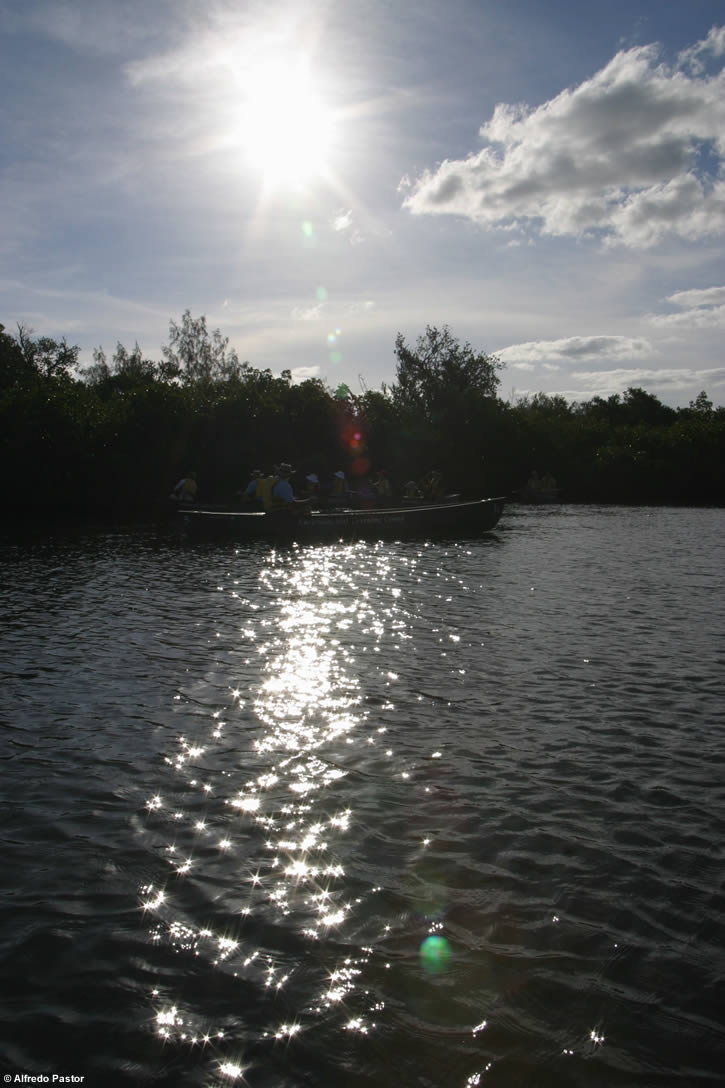
Tranquil and Beautiful - the Mangrove Wetlands await!
Visit the Environmental Learning Center located on Route 510 in Vero Beach, Florida to learn more about this important estuary and take with you the knowledge that you can make a difference, that you too can help to educate and preserve one of our world's most precious resources.
The wetlands of the Indian River Lagoon and the wetlands of other tropical and sub-tropic areas around the globe are under attack, exploited by shrimp fisheries in "developing" countries, and dredged and filled in the name of progress by "developed" countries. Where mangroves are destroyed, the fishing industry diminishes, and in some cases, has all but disappeared. The message is very clear - the mangrove forests of Florida and of the world are in need of immediate protection from further destruction, they are disappearing at an alarming rate and are essential to the health of our world's oceans. When we recognize that the mangrove forests and wetlands are the nurseries for our bountiful oceans we take the first step in working to preserve and restore that which future generations will need - a continued source of protein, provided by the sea.
Contact the Environmental Learning Center today. Sign up for a canoe trip and enter a world you've never seen before! Enroll in an environmental course and share your newfound knowledge with others! Help save our precious wetlands!